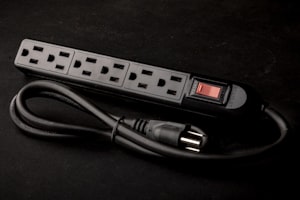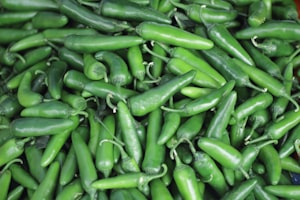Back in June, there was a lot of credible sounding talk that William Nylander was going to sign a contract before the season started.

It was all about how the Leafs would be willing because for a certain portion of fans, the expectation was they wouldn't be. But was Nylander himself ever up for it? Who knows. It seems hard to believe that something under $10 million wasn't doable at the time.
In that article above, I based my guesses on the contracts signed by similar players. When talking contracts the tendency is to look at the AAV (or worse, the total AAV times the term) and compare that to other deals dollar to dollar. I used to have some sympathy for this wrong-headed way of comparing back when it was possible the people doing it didn't remember the 90s or the 70s and real inflationary effects on the meaning of a dollar. The sympathy has run dry. Don't do this. It's torquing the numbers.
Last summer, my guess on Nylander's deal, based on contracts to players of similar results, was 10% of the salary cap in the year it stars. Next year the cap is likely to be $87.5 million by current estimates from the league. So, $8.8 million for 8 years seemed plausible.
It's not anymore, and the current rumour, sounding very well sourced, from Nick Kypreos is $11.2 million for 8 years. That's 12.8% of the cap projection.
There are currently 15 players that Cap Friendly list as at least that high a percentage at time of signing:
- Connor McDavid - 16.7%
- Nathan MacKinnon - 15.3%
- Auston Matthews - 14.6% – his next deal will be 15.1% of the projected cap ceiling when it takes effect
- Sidney Crosby - 14.5%
- Erik Karlsson - 14.5%
- Artemi Panarin - 14.3%
- Anze Kopitar - 14%
- Carey Price - 14%
- John Tavares - 13.8%
- Drew Doughty - 13.8%
- David Pastrnak - 13.6%
- Mitch Marner - 13.4%
- Jack Eichel - 13.3%
- Shea Weber - 13.1%
- Jamie Benn - 13%
Number 16 is the Jonathan Huberdeau deal Brad Treliving signed for 12.7% of the cap. Huberdeau was coming off a shooting % heater (his own and his linemates), and had a career high 115 points for Florida when he was traded for and then extended by Treliving. He had 55 points in Calgary last year and is "on pace" for 38 this year. He was 29 when his new deal was signed and 30 when it took effect.
Huberdeau is the extreme example in recent years of a GM falling for points, particularly assists, that aren't likely to be repeated. Treliving didn't have to extend Huberdeau when he did in the sense that the player had one more year on his contract. But to make the blockbuster trade of Matthew Tkachuk look like something other than a fleecing, he needed to lock down the players he got back. It was a fleecing.
Huberdeau's decline is unlikely to be age-related and more likely to be down to a boring team with a boring coaching style after seasons of emotional turmoil brought on by Darryl Sutter. He also doesn't have good shooters to feed passes to.
William Nylander is a dramatically better player than Huberdeau, and always has been. He has meaningful isolated impacts on creating offence, and for a winger who has always been criticized for his defence, commitment, physicality, hair colour, etc. he's hardly Phil Kessel. He isn't a big plus defensively, but he keeps the puck alive offensively and transitions well making him neither a big asset, nor a detriment.
If Huberdeau's is the only contract you compare Nylander too, you'd consider this $11.2 an underpay of significant proportion.
Nylander is also on a points heater, leading Auston Matthews by 6 points, and sitting fifth in the NHL after the game against the Kings that got him to 50 points. If he continues on, he'll set career records in goals and assists. And that will juice up the AAV on his contract because even a smarter GM than Treliving is still negotiating on planet earth where points are king.
The contract that Nylander should be compared to for a lot of serious reasons, but also because it's the one he'll most care about, is David Pastrnak's $11.25 by 8 years. Or, exactly what has been rumoured to be under discussion. Not, however, Pastrnak's 13.6% of the cap, that would be $11.9, and going too far.
Pastrnak is, I think, a better player, but not by a great deal. And "better" depends on a valuation that puts defence and offence as equally important. I don't think they are when it comes to assigning dollars to a forward, particularly a winger. Pastrnak's defence comes and goes, season by season. Nylander's offence, his scoring talent (and Pastrnak's) are rare skills. Pay for those, not the other stuff. You want the other stuff, for sure, but you don't want to pay $11 million for skills you can find for less in complementary players.
Oh, but how will the Leafs ever afford him!!
The Leafs have $54.328 million under contract for next year (using today's roster as a guide). The intent of this summer's signings was obvious with all the one-year deals. The team is going to be built anew next offseason, and whether or not it's built around the same core five players is at least a little up in the air. It's an exercise for the reader to look up who the top five are by points on the Leafs right now, though.
Should the Leafs have offered a generous $9 million plus last June? Yup. Pop on your hindsight goggles and you'll say $10 would have been fine. Why it didn't happen and who decided to wait we'll never know. Maybe it was all down to the managerial chaos caused, it seems, by Brendan Shanahan. Maybe it was the Rogers boardroom strife trickling down through MLSE. Maybe it was Treliving himself who didn't want to do another Huberdeau.
Anyway, you know what the difference is between last June's rumoured number and this one? Ryan Reaves plus Conor Timmins – two pressbox heroes.








Comment Markdown
Inline Styles
Bold: **Text**
Italics: *Text*
Both: ***Text***
Strikethrough: ~~Text~~
Code: `Text` used as sarcasm font at PPP
Spoiler: !!Text!!